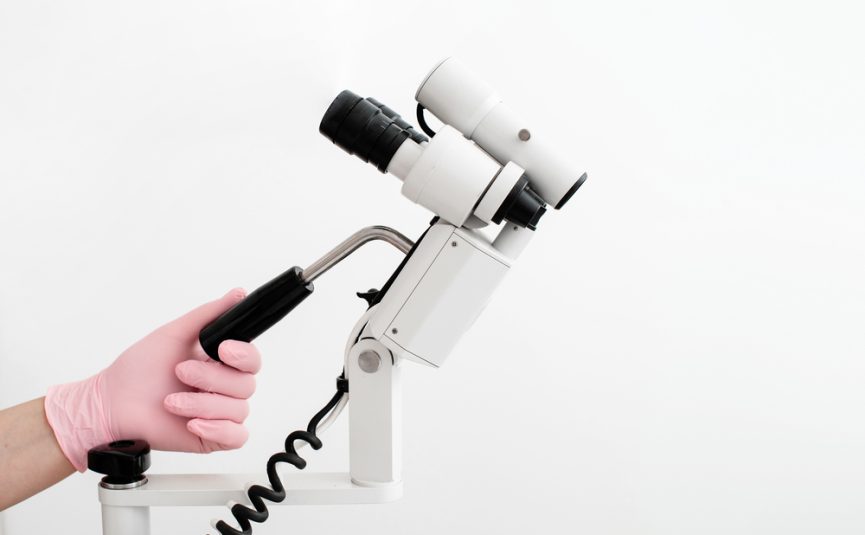East Melbourne VIC 3002

Pelvic inflammatory disease (PID) is a condition characterised by an infection of the upper genital tract organs within the pelvis, primarily caused by sexually transmitted organisms. It typically involves the uterus, ovaries, and supporting tissues, and if left untreated, PID can lead to long-term complications.
This article aims to provide an overview of pelvic inflammatory disease, including its causes, symptoms, diagnosis, treatment, and preventive measures. By understanding this condition and its potential consequences, you can take proactive steps to protect your reproductive health.
What Is Pelvic Inflammatory Disease?
Pelvic inflammatory disease (PID) is an infection of the upper genital tract organs, typically caused by sexually transmitted organisms. It is estimated that 85-90% of PID cases are due to sexually transmitted diseases, with chlamydia being the most common. As a result, screening for chlamydia is recommended for sexually active women undergoing cervical screening tests. This highlights the fact that any sexually active female can develop PID, with a higher prevalence observed among women under the age of 30 who have multiple sexual partners.
Symptoms Of Pelvic Inflammatory Disease
The most common symptoms of pelvic inflammatory disease (PID) include pelvic pain or lower abdominal pain, which can be centralised or felt on one side or both sides.
Other symptoms of PID may include:
- Abnormal vaginal discharge, which can be green, purulent, or pus-like, indicating a yellow colour
- Systemic or general body symptoms of fever, malaise, nausea, shakes or just feeling generally unwell
- Pain that may be triggered, such as during intercourse, and can become more noticeable during exercise or other activities
Causes Of Pelvic Inflammatory Disease
Pelvic inflammatory disease is caused by ascending bacteria travelling up through the vagina, through the cervix, into the uterus and from there into the actual pelvis. From there, it can spread throughout the pelvis as the pelvis is a large space with no restrictions to movement.
As mentioned previously, the most common organisms or bacteria associated with pelvic inflammatory disease are sexually transmitted in majority of cases. These sexual diseases include:
- Chlamydia
- Neisseria
- Gonorrhoea or germs that may live normally within the vagina that overgrow such as E.coli, anaerobic germs and other what we call gram negative organisms
Although the incidence of chlamydia and Neisseria infections was previously declining, it is now experiencing a resurgence and should always be considered in relation to pelvic inflammatory disease. Overgrowth of these organisms can lead to inflammation and infection of the reproductive organs within the pelvis.
Risk Factors Associated with PID
The most common risk group for pelvic inflammatory disease (PID) comprises sexually active women, particularly those under the age of 30. Non-surprisingly, engaging in sexual activity with multiple partners will increase your risk of developing PID.
Other things that put you at risk of extracting PID include:
- Engaging in sexual intercourse without protection, such as condoms, significantly increases your risk of developing pelvic inflammatory disease. Which is why it’s important to consider the use of protective and preventive contraception, particularly when engaging with new sexual partners
- Having had previous sexually transmitted disease or known pelvic inflammatory disease, increases your risk of infection
- Having an instrumental procedure such as a curettage, termination of pregnancy or any surgical procedure involving manipulation or instrumentation of the uterus increases your risk of developing pelvic inflammatory disease
- Having a foreign body, such as an intrauterine cavity device (IUCD) increases your risk of developing pelvic inflammatory disease
Complications Of Pelvic Inflammatory Disease
The main risks of pelvic inflammatory disease are acute or chronic pelvic pain which can be severe and longstanding. Even if the infection is adequately treated, chronic pelvic pain can be ongoing due to the formation of adhesions or scar tissue.
Another complication is the development of adhesions which can damage the fallopian tubes or arise between organs such as between ovaries and uterus, involve the fallopian tubes and increase the risk of an ectopic pregnancy ( a pregnancy in a fallopian tube rather than in the uterus).
It is important to consider that the early diagnosis of pelvic inflammatory disease and the subsequent early treatment of pelvic inflammatory disease can prevent many of these complications, especially the chronic complications such as adhesions. Certainly early treatment can help prevent infertility as an issue.
Diagnosis Of Pelvic Inflammatory Disease
Diagnosing pelvic inflammatory disease (PID) can be challenging due to the number of causes of chronic pelvic pain. However, there are several approaches and examinations that aid in the diagnosis.
Comprehensive History & Examination
When evaluating patients with pelvic pain, abnormal discharge or systemic symptoms a thorough history is crucial. This includes a detailed sexual history, as well as information about any previous episodes of pain, discharge or proven pelvic inflammatory disease (PID). Pain associated with intercourse, exercise, or daily movements needs to be noted down.
A gentle examination is performed with the patient’s consent, with an explanation of what’s happening along the way to ensure the patient is comfortable. During a pelvic examination the pelvis is often highly sensitive, and gentle manipulation of the cervix causing movement of the uterus, fallopian tubes, and ovaries may elicit significant pain.
In cases where the pain has led to peritonitis or inflammation of the pelvis and abdomen, simple movements or even coughing may elicit pain and the abdomen will be tender to touch, potentially exhibiting rigidity also.
Lastly, it’s important to consider other possible causes, such as appendicitis.
Pelvic Ultrasound
A significant proportion of women with pelvic inflammatory disease (PID) may be asymptomatic, which means they exhibit no symptoms whatsoever. In such conditions, PID is often discovered incidentally through ultrasound or exploratory procedures like laparoscopy.
A pelvic ultrasound can detect the presence of free fluid or pus within the abdomen and reveal adhesions or scar tissue between organs. If a vaginal ultrasound is performed, the probe that is inserted into the vagina may elicit tenderness, especially when organs such as the ovaries, fallopian tubes or the uterus itself are probed. Bacteriological specimens obtained from the cervix and the vagina can indicate the presence of sexually transmissible organisms like chlamydia and gonorrhoea or identify a purulent discharge.
Laparoscopy
A laparoscopy, a surgical procedure involving the insertion of a telescope through a small incision near the navel, can provide a definitive diagnosis of PID or identify alternative causes of pelvic pain.
Blood Tests
In some cases where the diagnosis remains unclear, certain blood tests can be helpful. A full blood examination, which measures the white cell count, or a C-reactive protein (CRP) test, which detects elevated protein levels indicating infection, may provide valuable information to aid in the diagnosis of pelvic inflammatory disease.
CT Scan
Additionally, a CT scan may be conducted to assess the presence of appendicitis, or other potential causes
Treatment Of Pelvic Inflammatory Disease
When pelvic inflammatory disease (PID) is suspected, it is important to be aggressive and persistent with treatment.
The Use of Antibiotics
There are specific antibiotics that are prescribed to target the identified infections. Unfortunately, an increasing number of organisms responsible for sexually transmitted infections are resistant to certain, or multiple antibiotics. Consulting an infectious diseases specialist can be beneficial to ensure the use of appropriate antibiotics.
For mild cases, oral antibiotics, and sometimes more than one, may suffice. However, if the patient experiences significant pain or if the pelvic infection is severe, hospitalisation may be necessary for close monitoring and the administration of intravenous antibiotics. Oral antibiotics may not be suitable if the patient feels unwell, nauseated, and unable to tolerate oral medication.
In all cases, the duration of antibiotics is important. It is essential to ensure that appropriate care is not discontinued prematurely, particularly when dealing with specific organisms that require prolonged treatment.
Follow-up swabs are crucial, especially for sexually transmitted infections, to confirm eradication of the infection. Follow-up examinations, ultrasounds, and bacteriology using specimens from the vagina and cervix are necessary to ensure complete recovery.
In cases of sexually transmitted diseases, it is crucial to refer the patient’s partner to an appropriate practitioner for treatment. This step is vital to prevent reinfection and ensure comprehensive management.
Prevention Of Pelvic Inflammatory Disease
The prevention of pelvic inflammatory disease revolves around the following:
- Adequate treatment: Ensure that any previous diseases are treated adequately, and the duration of treatment if appropriate
- Partner treatment: It’s essential to ensure any partner who may also have a sexually transmitted disease receives adequate treatment
- Addressing compounding causes: Consideration should be given to any contributing factors, such as the presence of an intrauterine cavity device (IUCD), which may need to be removed
- Condom use: Using condoms during sexual intercourse, particularly with a new partner can help reduce the risk of PID
If you suspect that you have any of the symptoms indicating the presence of pelvic inflammatory disease, seeking early treatment is important. Specifically, undergoing the appropriate diagnostic tests, especially in young women during routine tests (such as chlamydia) is crucial. Numerous PCR or simple tests, which are identical to the tests we use for COVID are available for most sexually transmitted diseases. These tests provide quick results and aid in the prompt diagnosis of infections.
By following these preventative measures and seeking timely treatment you can reduce the risk of developing pelvic inflammatory disease.
In conclusion, diagnosing pelvic inflammatory disease (PID) is a complex process that requires a careful history, thorough examination, and the use of supplementary tests like ultrasounds, bacteriological analysis for specific organisms and sometimes even surgical treatment such as an exploratory laparoscopy.
To prevent long-term complications such as infertility, chronic pelvic pain, adhesions or an ectopic pregnancy it is crucial to pursue aggressive and targeted treatment. This may include referral to an infectious disease specialist, particularly considering the growing antibiotic resistance among the organisms commonly associated with PID.
Associate Professor Len Kliman, with over 30 years experience in treating patients with chronic pelvic pain and pelvic inflammatory disease, recognises the importance of accurate diagnosis and effective treatment for all individuals affected by this condition.










